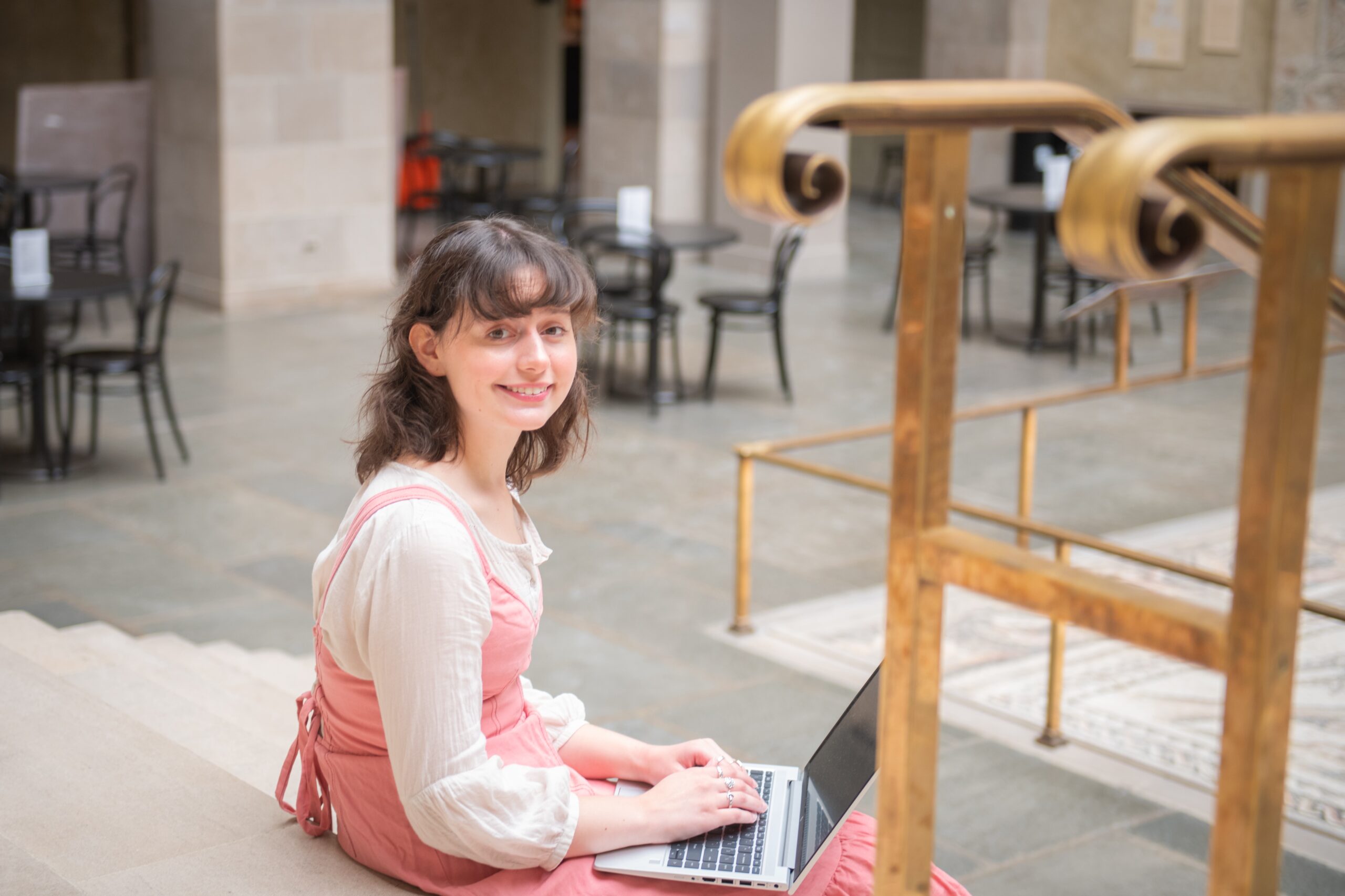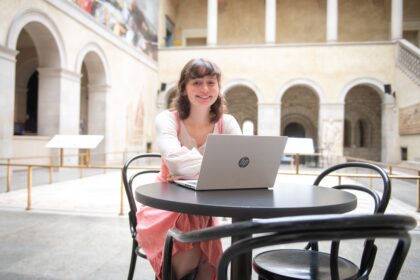Prints, provenance, and an oil jar

“Part of my family is from Algeria. Making an impact on the display of North African art has greatly strengthened my sense of purpose in my work.”
Deep within the winding hallways of the Worcester Art Museum basement lies an extensive treasure trove of filing cabinets, containing nearly 130 years of museum history and records. I spent my summer working with this carefully gatekept inventory, reviewing rows and rows of drawers filled with thousands of meticulously labeled file folders.
The Worcester Art Museum, founded in 1898, is home to nearly 40,000 works of art, including one of the most impressive collections of Antioch mosaics in the country. This past summer, the museum began installation and finalization of Gallery 106, a beautiful collection of Islamic, Western, and Southeast Asian art, boasting a massive 19th-century Iranian tile depicting a court scene, a bronze Somaskanda sculpture, and a gorgeous collection of Islamic folios, known more formally as muraqqa’, and manuscripts.
As an art history and English double major, the Worcester Art Museum has been an incredible source of inspiration for both creative writing and research during my time at Clark. Gallery 106 has played an especially major role in the development of my research interests, which largely focus on Islamic art, and more specifically North African art. This year, I had the privilege of receiving the Steinbrecher Fellowship and the Sara Bickman Music and Arts Summer Internship Award, which allowed me to spend summer 2024 working on three major projects at the museum.
My first project was an overhaul of the digital descriptions for every piece in Gallery 106, supervised by Yagnaseni Datta, the Sohail and Mona Masood Assistant Curator of Asian and Islamic Art. I cataloged each piece, a task that was later expanded to include the entire Islamic and Asian art collection.
 I researched an oil jar that had very little previous scholarship and origin information attached with it. After close inspection of its delicate blue underglaze and crazing (exterior glaze cracking) along the surface, I discovered that it was likely of the Mamluk Sultanate, and of North African origin, specifically Egyptian. This work helped me transition into my next project, which delved more into provenance research, which involved investigating the sometimes murky origins of specific pieces.
I researched an oil jar that had very little previous scholarship and origin information attached with it. After close inspection of its delicate blue underglaze and crazing (exterior glaze cracking) along the surface, I discovered that it was likely of the Mamluk Sultanate, and of North African origin, specifically Egyptian. This work helped me transition into my next project, which delved more into provenance research, which involved investigating the sometimes murky origins of specific pieces.
To conduct this research, I moved deeper into the basement of the museum, landing in the file room, a windowless space filled with furniture and records that were protected from the ongoing construction upstairs.
There, I worked with Daniel Healey, the museum’s provenance research specialist, to create a catalog of pieces that needed to be uploaded to the Association of Art Museum Directors (AAMD) database of works of art with uncertain provenance. The AAMD database contains a record of antiquities and archaeological artifacts, acquired post-2008 with uncertain provenance at any point after 1970, to maintain standards of ethical collecting within American museums. In total, the pieces belong to 35 U.S. museums.
As part of my work, I read through 296 different acquisition files for pieces within nearly every department at the Worcester Art Museum and compiled a massive spreadsheet cataloging dates, existing provenance, descriptions, and determinations of whether the object was an antiquity or archaeological. The spreadsheet will be used for future provenance research at the museum to prioritize objects that may be called into question by international law.
My final project was in the museum’s Japanese art department, under Fiona Collins, the curatorial researcher of Asian art and a visiting professor at Clark. I researched Orientalism within the Japanese Shin-hanga print movement, tracing both the travels of individual Shin-hanga artists and researching the Western appeal of Shin-hanga printmaking, which largely catered to an American and European audience. The department will use my research in its spring exhibition of Shin-hanga prints, highlighting the influence of Shin-hanga in the Worcester Art Museum and throughout the United States.
All three of these projects are directly tied to my desire to pursue a master’s degree studying how Orientalism has impacted the display, labeling, cataloging, and, oftentimes, provenance and repatriation efforts for North African art. Part of my family is from Algeria, so challenges like these hit close to home, as they impact our cultural heritage. Making an impact on the display of North African art already, as with the oil jar, has greatly strengthened my sense of purpose in my work.
The Worcester Art Museum is open Wednesday through Sunday from 10 a.m. to 4 p.m. Admission is free for Clarkies who show a college ID.


